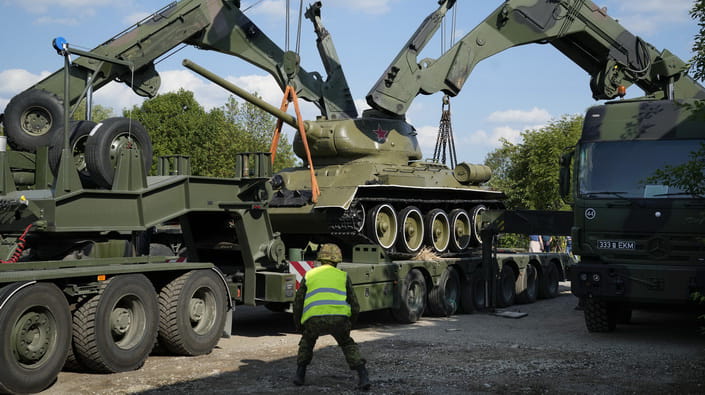Fight for the Tank: Estonia Decommunized the Main Symbol of the Soviet Occupation

Estonian Narva, all of a sudden, turned into the main newsmaker on August 16. The government removed the Soviet T-34 tank, which was extremely important for the Russian community.
Estonian authorities had debated that for about 30 years, since the restoration of independence. But they had to postpone a decision every time until now, fearing a conflict with the Russian community of Narva.
Narva is a rather specific city. It is located on the border with Russia and has the most ethnic Russians in Estonia.
Mass pogroms in Tallinn in 2007, committed by local Russians and tourists from Russia in response to the relocation of another Soviet monument, only increased the risks that a new removal would cause such events.
However, Russia's full-scale war against Ukraine left no choice for the Estonian authorities.
The Soviet tank was not really a symbol of the fight against Nazism. Estonians saw it as a symbol of Soviet and Russian militarism and the occupation of their country.
At first glance, the removal of the Narva tank happened without any particular problems. Nine people were detained, and two more joined them at night.
However, in reality, the government's attempts to minimize risks and compromise with the Narva Russians failed. So Tallinn faced a quite unpleasant alternative: either give up or take robust action.
Tallinn preferred a compromise for a long time. It compromised with local authorities after long consultations - the city council will make a decision on removal, but the tank will remain in the city. Either as an exhibit in the city museum or in a new museum, which was supposed to be a collection of Soviet-era monuments.
The presence of the Soviet tank in Narva looked like a clear concession because it remained a place of attraction for the local pro-Russian population. However, they deliberately made this concession in Tallinn to avoid inter-ethnic confrontation.
And then weird things began to happen. On August 15, the city council of Narva was supposed to make a decision on the removal of the tank - the local opposition and the coalition agreed on that.
Suddenly, the opposition withdrew from the deal, insisting on keeping the tank in the old city. In response, the coalition stated that such an issue, which affects all citizens, should only be adopted by consensus, and therefore they would take the case off the table.
The Estonian government faced a difficult choice - either to continue the dialogue with the local authorities or to remove the tank independently.
Instead, the Estonian Centre Party - the most significant opposition force in Estonia - supported the removal out of nowhere. They are known as "moderately pro-Russian" politicians.
"Tank іs a combat vehicle that is not suitable for public space and is not a good monument," said centrist leader Jüri Ratas.
So the government decided to act and removed the tank on the very next day - on August 16.
That day, the border crossing point with Russia in Narva was closed. The government did not want to let happen again the events of 2007 when football fans from Russia protested against the removal.
The tank was transferred to the Estonian War Museum, just outside Tallinn, without serious protests.
The story with the tank showed that Estonia's Russian community is unwilling to compromise with the government. It sees the current events rather as a violation of its rights. And they certainly want to take revenge for that.
The embassy of the Russian Federation is adding fuel to the fire, routinely accusing the Estonian authorities of "rehabilitating Nazism" and a "shameful war against historical truth."
Fortunately, as the events of August 16 showed, propaganda can no longer organize a violent confrontation. "Putin's friends" lost this round.
The "Expert opinion" section is not an editorial article and exclusively reflects the author's point of view
Written by Yurii Panchenko
"European Pravda" editor
